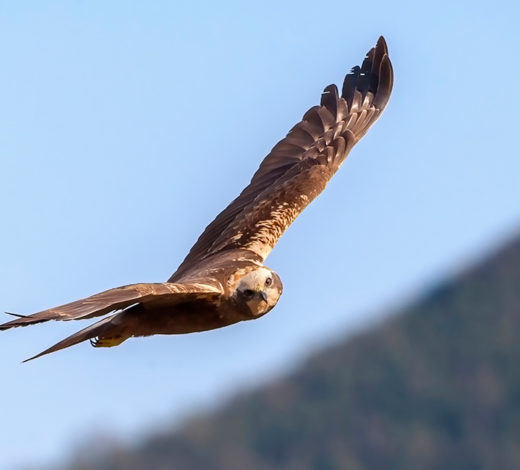Grey Heron
(Ardea cinerea)
This is one of the largest herons. As per its name, it is grey in colour, and its neck is white with black stripes.
Description
The adult’s beak is a pretty golden yellow and the eyes are also yellow. The head is white, with two black stripes that start at the eyes, follow the sides of the head, and end at two tufts at the nape. Wingspan: up to 195 cm. Length: up to 94 cm. The young are duller in colour and the black parts are grey.
Habitat
They can be found in various types of damp areas: ponds, river meanders, marshes, the edges of large lakes or canals as long as they are rich in vegetation on the banks, shallow seashores, lagoons. In winter they can also be found on cultivated terrain in search of food. They are more demanding when nesting, requiring damp forests with large trees where human disturbance is at a minimum.
Observation in the Torbiera Reserve
They can easily be seen both in flight and sitting still at the base of rushes, lying in ambush for fish. The period when the young scatter, at the end of summer, is the best for easy sightings, given that the number of grey herons in the Reserve increases considerably. They are present year round in the Reserve, but do not nest. In fact, most individuals that can be seen feeding during the nest-building period come from other heron nesting areas in the province. This is a good example of the importance of the Reserve even for species that do not nest directly within its borders.





